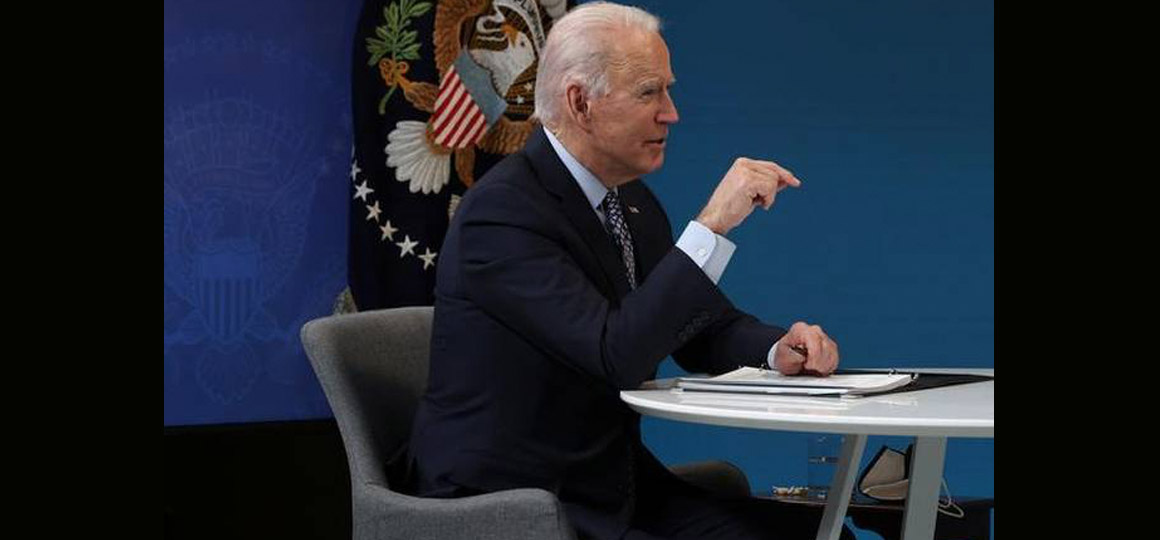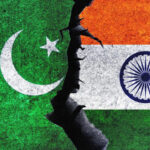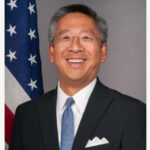The India-U.S. relationship may not change from the course that Trump chose, but China and rights could be issues
One year since former United States President Donald Trump spoke about the India-U.S. relationship, and his own relationship with his “true friend” Prime Minister Narendra Modi in glowing terms at the Sardar Patel Stadium in Ahmedabad, much has changed for both countries. The U.S. has changed its leadership, growth prospects for both India and the U.S. — the two countries which have the highest number of coronavirus cases in the world — have dimmed considerably, and even the name of the stadium has changed. The new U.S. President, Joseph Biden, has spent much of his first month in office changing Mr. Trump’s policies, including reversing the U.S.’s withdrawal from the Paris Climate Agreement, the World Health Organization, the UN Human Rights Council, and cancelling the “Muslim” ban and other immigration policies, among a slew of other domestic measures through executive orders.
The connect this time
It would seem, however, that Mr. Biden is not at present planning to change the course Mr. Trump chose in building closer ties with India, including the push for the Quadrilateral and Indo-Pacific policy. Mr. Biden called Mr. Modi right after he had called all treaty alliance partners, but before he spoke to Israeli Prime Minister Benjamin Netanyahu or King Salman of Saudi Arabia. There have been calls between the U.S. Defence Secretary and National Security Adviser with their Indian counterparts. There were also two calls between the U.S. Secretary of State, Anthony J. Blinken, and the External Affairs Minister, S. Jaishankar, in addition to a virtual Quad Ministerial meeting that included the Foreign Ministers of Japan and Australia.
Mr. Biden’s Climate Change Envoy John Kerry also appeared on a discussion with Mr. Jaishankar, where he praised India’s efforts on renewable energy and emissions, and charted an ambitious course ahead of the U.S.’s “Earth Day Summit” on April 22. The State Department spokesperson also revealed plans for an “an overarching memorandum of understanding (MoU) to enhance health cooperation” which will deal with COVID-19 testing, vaccination and critical drug supplies.
Meanwhile, Mr. Biden’s decision to lift restrictions and caps on a number of visas and green cards has no doubt relieved the Modi government of one of the constant sources of worry that India has had with the U.S. Given the list of “Priorities” for the administration listed by the White House on its website, it is safe to say that on a majority of issues, including COVID-19, climate, health care, immigration and restoring America’s global standing, New Delhi and Washington are already engaging each other, and are on the same page.
China on the horizon
Where then, if at all, might trouble lie? While these are still early days to hazard anything, certain preliminary indicators could provide a clue. To begin with, there is China. There is no doubt that China’s aggression at the Line of Actual Control (LAC) in early 2020 brought India and the U.S. closer, galvanised greater military cooperation, intelligence sharing, and what former Trump National Security Council Director Lisa Curtis called America’s “moral and material support”.
Events at the LAC also made New Delhi give up years of hesitation over holding Malabar Exercises for the Quad, and hold two Quad ministerial meetings in the past year. The difference this year is that the Biden administration takes charge as India and China have disengaged from their heights in the Pangong Tso area, and are discussing what could be a long-drawn disengagement and de-induction of troops. As a result, the Modi government may have to be more reticent with the Biden administration as it seeks to take on China strategically. For the Biden administration too, which is walking a fine line with statements on the challenge from China as a competitor in areas such as defence, trade and technology, but also the need for cooperation in certain areas such as climate change and where it is in the U.S.’s “interests to do so” , the messaging is likely to be more mixed than before.
Meanwhile, there will be areas where India may become collateral damage: in his latest executive order on securing America’s supply chains, for example, Mr. Biden has sought action in areas such as pharmaceuticals where India is a major producer and could be hit if the U.S. insists on localising production. The order is especially significant given that India-Japan-Australia are already working on a trilateral Supply Chain Resilience Initiative (SCRI) to counter their dependence on Chinese goods, that the U.S. is not a part of.
Getting it right on rights
Human rights is the next area where India and the U.S. could be at odds both on the bilateral front and in the region, given Mr. Biden’s commitment to put human rights “at the centre of Foreign Policy”. The U.S. readout of his call with Mr. Modi held that a “shared commitment to democratic values is the bedrock for the U.S.-India relationship”, and Mr. Biden and U.S. Vice-President Kamala Harris are expected to be more vocal on these issues which the Modi government has been prickly about. After four years of what former diplomat Ashley Tellis called Mr. Trump’s “values holiday”, the U.S. is back to commenting on issues that India considers its internal affairs and what it calls “crackdowns on freedom of speech”. In the past month, the U.S. administration has weighed in on India’s lifting of the Internet ban in Jammu and Kashmir, farmers’ protests and the government’s face-off with Twitter. It is unlikely that the Biden administration will brush away the Modi government’s actions to shut down international agencies — Amnesty, Greenpeace, Compassion International — in the same way as the previous administration did.
Further afield, the U.S. will want India to partner in ensuring human rights in South Asia, particularly given its current term in the UN Security Council. Practically every call between the respective capitals has mentioned concerns over the coup by the Army in Myanmar (Burma). However, while Washington has stepped up sanctions and called for the Suu Kyi-NLD government to be reinstated, New Delhi has spoken only for the “rule of law” and democratic processes to be upheld, and the Ministry of External Affairs has laid emphasis on India’s interests in the region. A similar situation could arise over Sri Lanka which faces a country-specific resolution at the Human Rights Council for alleged wartime excesses in 2009 operations against the LTTE, and India’s support for its neighbour would place it closer to Beijing’s position than to Washington’s.
Russia bonds, trade concerns
Other areas of possible discord outlooked (flagged) by experts will be over India’s ties with Russia, in particular the arrival of the S-400 missile systems which will attract sanctions under the U.S.’s Countering America’s Adversaries Through Sanctions Act, a law that the Democrats in Congress pushed through during the Trump administration. Mr. Biden’s administration will seek to implement the law more stringently, calling it a “powerful tool” in its dealings with Turkey on the S-400 purchase and the Nord Stream2 pipeline project from Russia.
Trade is an ongoing concern from the Trump era, and India is still hopeful of reversing the U.S. decision to cancel its GSP status for exports. Meanwhile, the mega Indian investment plan announced during the “Howdy Modi” visit — Petronet India’s $2.5 billion stake in U.S. company Tellurian’s Driftwood LNG project — has ended abruptly after the MoU signed in September 2019 lapsed.
Afghanistan and Pakistan
On Afghanistan, New Delhi has charted an independent course from the U.S., standing firmly with the Ashraf Ghani government and resolutely refusing to engage the Taliban. This is pragmatic, but it also means the U.S. will continue to see India as “not part of the problem, not part of the solution”, and seek more support from Pakistan to facilitate its exit. In particular, the U.S.’s pre-Trump formulations that conflate peace in Kashmir in order to help its desired outcomes in Afghanistan, as its recent statement on the India-Pakistan LoC ceasefire shows, will become a sore point for New Delhi.
Worldview with Suhasini Haidar | India and the Afghan peace process
Above all, the shift from a year ago is likely to be evidenced by the stark contrast in Mr. Biden’s personal style from that of his predecessor. While South Block mandarins no longer wake up in the morning dreading the damage control required for the latest tweet from the U.S. President, it is clear that Mr. Biden is not as big on pushing the personal connection with Mr. Modi as Mr. Trump or even President Barack Obama was. The difference will make for a more sober, but perhaps more substantive bilateral relationship in the four years ahead.
The Biden touch to sober, yet substantive ties
The India-U.S. relationship may not change from the course that Trump chose, but China and rights could be issues
One year since former United States President Donald Trump spoke about the India-U.S. relationship, and his own relationship with his “true friend” Prime Minister Narendra Modi in glowing terms at the Sardar Patel Stadium in Ahmedabad, much has changed for both countries. The U.S. has changed its leadership, growth prospects for both India and the U.S. — the two countries which have the highest number of coronavirus cases in the world — have dimmed considerably, and even the name of the stadium has changed. The new U.S. President, Joseph Biden, has spent much of his first month in office changing Mr. Trump’s policies, including reversing the U.S.’s withdrawal from the Paris Climate Agreement, the World Health Organization, the UN Human Rights Council, and cancelling the “Muslim” ban and other immigration policies, among a slew of other domestic measures through executive orders.
The connect this time
It would seem, however, that Mr. Biden is not at present planning to change the course Mr. Trump chose in building closer ties with India, including the push for the Quadrilateral and Indo-Pacific policy. Mr. Biden called Mr. Modi right after he had called all treaty alliance partners, but before he spoke to Israeli Prime Minister Benjamin Netanyahu or King Salman of Saudi Arabia. There have been calls between the U.S. Defence Secretary and National Security Adviser with their Indian counterparts. There were also two calls between the U.S. Secretary of State, Anthony J. Blinken, and the External Affairs Minister, S. Jaishankar, in addition to a virtual Quad Ministerial meeting that included the Foreign Ministers of Japan and Australia.
Mr. Biden’s Climate Change Envoy John Kerry also appeared on a discussion with Mr. Jaishankar, where he praised India’s efforts on renewable energy and emissions, and charted an ambitious course ahead of the U.S.’s “Earth Day Summit” on April 22. The State Department spokesperson also revealed plans for an “an overarching memorandum of understanding (MoU) to enhance health cooperation” which will deal with COVID-19 testing, vaccination and critical drug supplies.
Meanwhile, Mr. Biden’s decision to lift restrictions and caps on a number of visas and green cards has no doubt relieved the Modi government of one of the constant sources of worry that India has had with the U.S. Given the list of “Priorities” for the administration listed by the White House on its website, it is safe to say that on a majority of issues, including COVID-19, climate, health care, immigration and restoring America’s global standing, New Delhi and Washington are already engaging each other, and are on the same page.
China on the horizon
Where then, if at all, might trouble lie? While these are still early days to hazard anything, certain preliminary indicators could provide a clue. To begin with, there is China. There is no doubt that China’s aggression at the Line of Actual Control (LAC) in early 2020 brought India and the U.S. closer, galvanised greater military cooperation, intelligence sharing, and what former Trump National Security Council Director Lisa Curtis called America’s “moral and material support”.
Events at the LAC also made New Delhi give up years of hesitation over holding Malabar Exercises for the Quad, and hold two Quad ministerial meetings in the past year. The difference this year is that the Biden administration takes charge as India and China have disengaged from their heights in the Pangong Tso area, and are discussing what could be a long-drawn disengagement and de-induction of troops. As a result, the Modi government may have to be more reticent with the Biden administration as it seeks to take on China strategically. For the Biden administration too, which is walking a fine line with statements on the challenge from China as a competitor in areas such as defence, trade and technology, but also the need for cooperation in certain areas such as climate change and where it is in the U.S.’s “interests to do so” , the messaging is likely to be more mixed than before.
Meanwhile, there will be areas where India may become collateral damage: in his latest executive order on securing America’s supply chains, for example, Mr. Biden has sought action in areas such as pharmaceuticals where India is a major producer and could be hit if the U.S. insists on localising production. The order is especially significant given that India-Japan-Australia are already working on a trilateral Supply Chain Resilience Initiative (SCRI) to counter their dependence on Chinese goods, that the U.S. is not a part of.
Getting it right on rights
Human rights is the next area where India and the U.S. could be at odds both on the bilateral front and in the region, given Mr. Biden’s commitment to put human rights “at the centre of Foreign Policy”. The U.S. readout of his call with Mr. Modi held that a “shared commitment to democratic values is the bedrock for the U.S.-India relationship”, and Mr. Biden and U.S. Vice-President Kamala Harris are expected to be more vocal on these issues which the Modi government has been prickly about. After four years of what former diplomat Ashley Tellis called Mr. Trump’s “values holiday”, the U.S. is back to commenting on issues that India considers its internal affairs and what it calls “crackdowns on freedom of speech”. In the past month, the U.S. administration has weighed in on India’s lifting of the Internet ban in Jammu and Kashmir, farmers’ protests and the government’s face-off with Twitter. It is unlikely that the Biden administration will brush away the Modi government’s actions to shut down international agencies — Amnesty, Greenpeace, Compassion International — in the same way as the previous administration did.
Further afield, the U.S. will want India to partner in ensuring human rights in South Asia, particularly given its current term in the UN Security Council. Practically every call between the respective capitals has mentioned concerns over the coup by the Army in Myanmar (Burma). However, while Washington has stepped up sanctions and called for the Suu Kyi-NLD government to be reinstated, New Delhi has spoken only for the “rule of law” and democratic processes to be upheld, and the Ministry of External Affairs has laid emphasis on India’s interests in the region. A similar situation could arise over Sri Lanka which faces a country-specific resolution at the Human Rights Council for alleged wartime excesses in 2009 operations against the LTTE, and India’s support for its neighbour would place it closer to Beijing’s position than to Washington’s.
Russia bonds, trade concerns
Other areas of possible discord outlooked (flagged) by experts will be over India’s ties with Russia, in particular the arrival of the S-400 missile systems which will attract sanctions under the U.S.’s Countering America’s Adversaries Through Sanctions Act, a law that the Democrats in Congress pushed through during the Trump administration. Mr. Biden’s administration will seek to implement the law more stringently, calling it a “powerful tool” in its dealings with Turkey on the S-400 purchase and the Nord Stream2 pipeline project from Russia.
Trade is an ongoing concern from the Trump era, and India is still hopeful of reversing the U.S. decision to cancel its GSP status for exports. Meanwhile, the mega Indian investment plan announced during the “Howdy Modi” visit — Petronet India’s $2.5 billion stake in U.S. company Tellurian’s Driftwood LNG project — has ended abruptly after the MoU signed in September 2019 lapsed.
Afghanistan and Pakistan
On Afghanistan, New Delhi has charted an independent course from the U.S., standing firmly with the Ashraf Ghani government and resolutely refusing to engage the Taliban. This is pragmatic, but it also means the U.S. will continue to see India as “not part of the problem, not part of the solution”, and seek more support from Pakistan to facilitate its exit. In particular, the U.S.’s pre-Trump formulations that conflate peace in Kashmir in order to help its desired outcomes in Afghanistan, as its recent statement on the India-Pakistan LoC ceasefire shows, will become a sore point for New Delhi.
Worldview with Suhasini Haidar | India and the Afghan peace process
Above all, the shift from a year ago is likely to be evidenced by the stark contrast in Mr. Biden’s personal style from that of his predecessor. While South Block mandarins no longer wake up in the morning dreading the damage control required for the latest tweet from the U.S. President, it is clear that Mr. Biden is not as big on pushing the personal connection with Mr. Modi as Mr. Trump or even President Barack Obama was. The difference will make for a more sober, but perhaps more substantive bilateral relationship in the four years ahead.






NO COMMENT